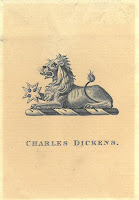 On November 7th, 1908, Dartmouth squared off against Princeton at the famed Polo Grounds for "the only big football game that New Yorkers [could] witness" that year. Obviously, most Dartmouth students couldn't make the trip down to New York for the game, but they were anxious about the fate of their team. So a telegraph machine was set up in the gymnasium and a telegraph operator, "Miss Rodey," received 114 telegrams sent directly from the game that detailed every play.
On November 7th, 1908, Dartmouth squared off against Princeton at the famed Polo Grounds for "the only big football game that New Yorkers [could] witness" that year. Obviously, most Dartmouth students couldn't make the trip down to New York for the game, but they were anxious about the fate of their team. So a telegraph machine was set up in the gymnasium and a telegraph operator, "Miss Rodey," received 114 telegrams sent directly from the game that detailed every play.The D from November 10, 1908, sets the scene pretty well:
A large crowd gathered in the Gym last Saturday afternoon to hear the reports from the game in New York. These came by direct wire from the Polo Grounds, and were by far the most complete and accurate received this year. Each play was carefully transmitted, and the location of the ball was always stated at the end of each scrimmage. This enabled the following of the game on the diagram board with unusual precision.Get this... Someone saved all of those telegrams and had them beautifully bound and presented to the Library in 1916. You can come in and relive the game, play by play, by flipping through the series of transmissions. The internet has nothing on Dartmouth in 1908.
Ask for DC History GV957.D3D3 1908.







